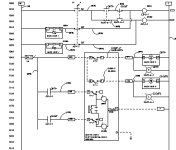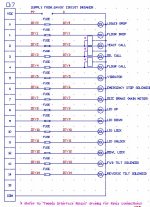TimothyMoulder
Member
For simplicity, let's keep this hypothetical :
You are diagramming the interconnections between two machines. Machine A sends three +24 VDC signals to Machine B, via interposing relays. Machine B returns the favor.
Where the relays are located physically is irrelevant to my question - I'm not trying to rehash the "wet-dry contact" issue What I want to know is, how do you like to see this sort of relationship drawn on a schematic?
What I want to know is, how do you like to see this sort of relationship drawn on a schematic?
For instance, would you work it into the regular IO circiut diagrams somehow, or dedicate a page specifically to this relationship? If the latter, what do you do with the IO on the normal page? Ignore it? Use a line jump to the page? (Hmm, may have just answered myself...)
I'm really curious to see your individual approaches.
Thanks!
TM
You are diagramming the interconnections between two machines. Machine A sends three +24 VDC signals to Machine B, via interposing relays. Machine B returns the favor.
Where the relays are located physically is irrelevant to my question - I'm not trying to rehash the "wet-dry contact" issue
For instance, would you work it into the regular IO circiut diagrams somehow, or dedicate a page specifically to this relationship? If the latter, what do you do with the IO on the normal page? Ignore it? Use a line jump to the page? (Hmm, may have just answered myself...)
I'm really curious to see your individual approaches.
Thanks!
TM





